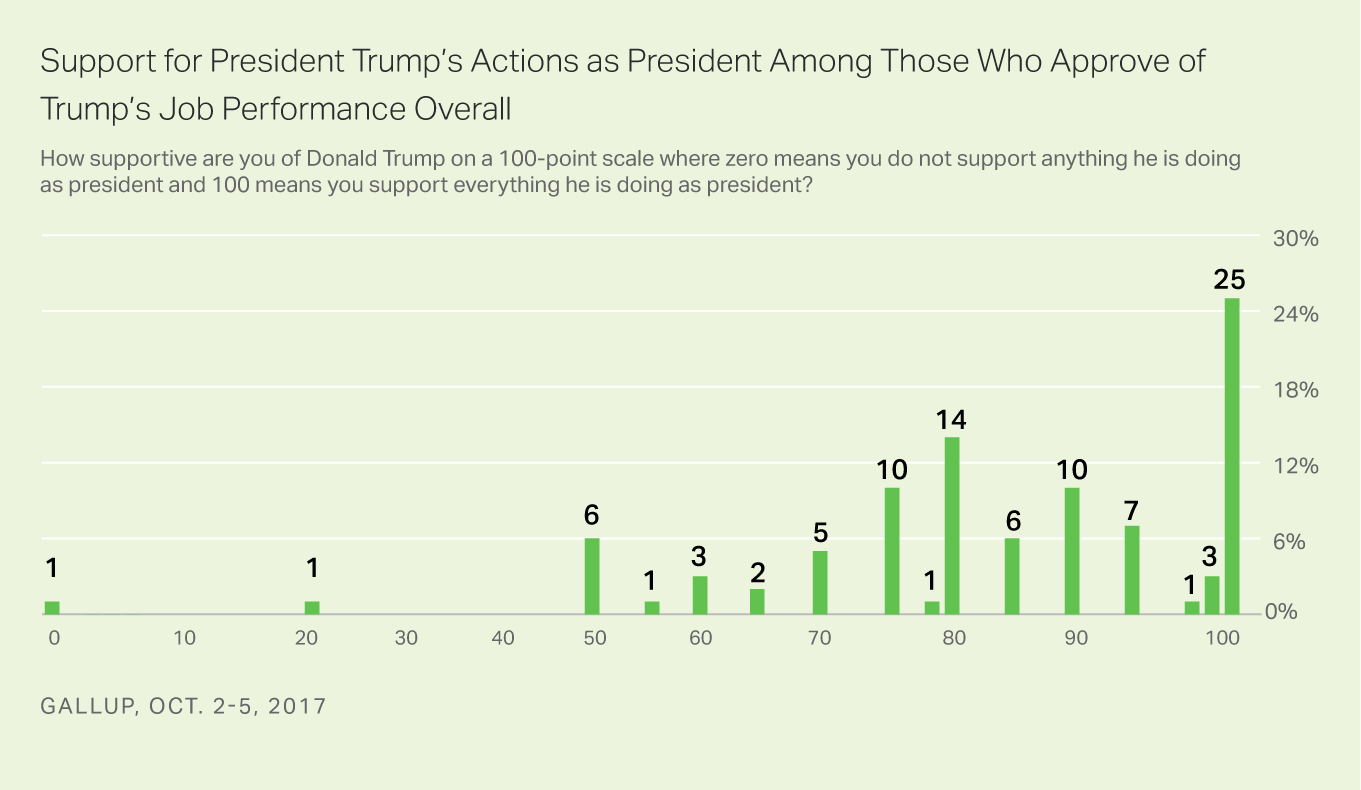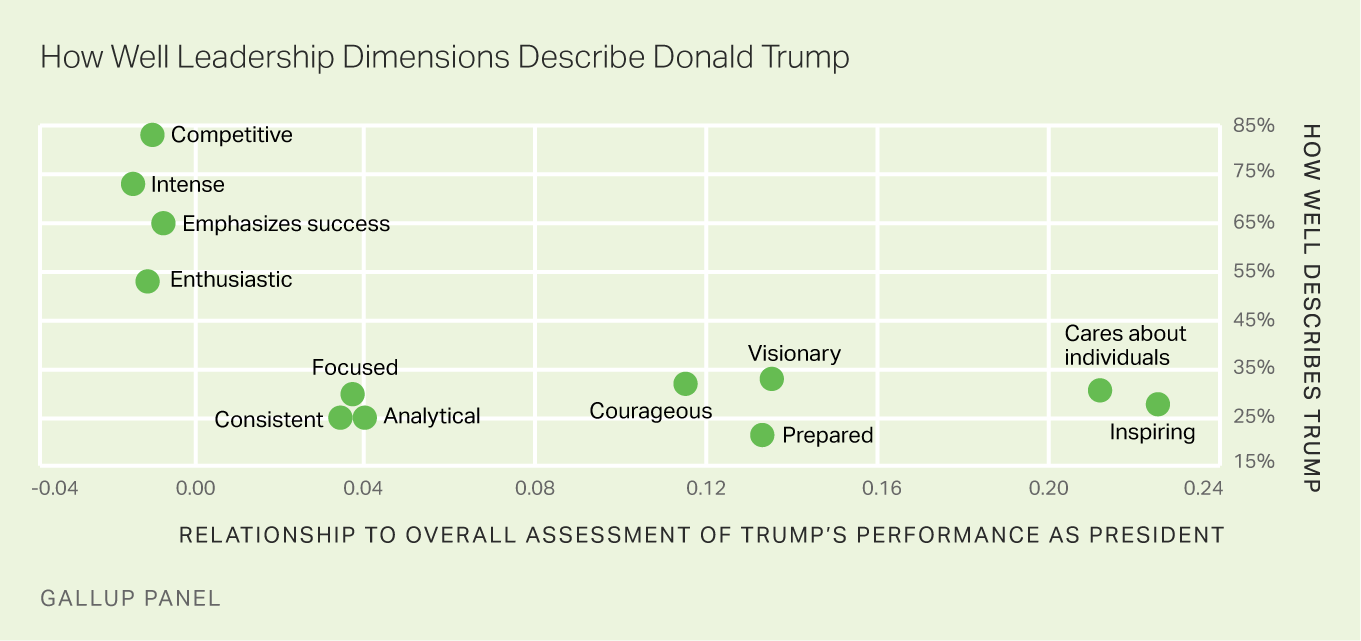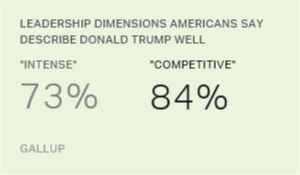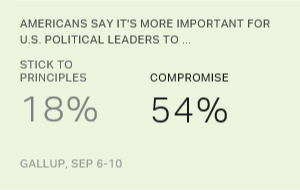President Donald Trump's average weekly job approval rating has remained in the 35% to 39% range for months. The last time his weekly average was above 39% was well over four months ago, and he has never had a weekly average below 35%.
We have recently been delving beneath the surface of these broad approval ratings in a couple of different ways. One of these involved asking Americans to tell us how much of what Trump has done as president they support -- using a 0 to 100 scale, where 0 means the person doesn't support anything Trump does and 100 means the person supports everything Trump does. My colleague Jim Norman reviewed the data in detail last week, looking particularly at differences between Republicans and Democrats.
We learn a bit more by looking at this question among just those who approve of the job Trump is doing. (The two groups -- those who are Republican or lean Republican and those who approve of the job Trump is doing -- overlap, but not totally; about a quarter of Republicans and independents who lean Republican say they don't approve of the job Trump is doing).

A quarter of those who approve of the job Trump is doing as president say they support 100% of what he is doing. On a cumulative basis, a little less than half of Trump approvers support 90% or more of what he does, about two-thirds support 80% or more, and almost nine in 10 support at least 60% of what he does.
We haven't used this scale before, so we don't know how these results might compare with the responses among those who approved of the job Barack Obama -- or George W. Bush -- did as president. But it is clear that those who approve of Trump's job performance overall still have issues with some of what he is doing. In fact, about one in five of those who approve support less than 75% of what he is doing.
One virtue of the classic Gallup approval rating is that it forces people to sum up their feelings about a president as they have to do in the voting booth -- arriving at a thumbs-up or a thumbs-down decision. The 0 to 100 scale results show, however, that behind that binary choice there is disagreement with some of what he is doing on the "approve" side of the ledger and agreement with some of what he is doing among those who disapprove.

Gallup Analytics
Subscribe to our online platform and access nearly a century of primary data.
Another aspect of the way the American public looks at Trump is his leadership manner or style. My colleague Jim Harter and I looked into that in some detail recently, based on extensive leadership research Gallup has done over the years.
I was intrigued by a recent report in Forbes magazine that emphasized how Trump tends to view the world as a win-lose competition, with winning all that matters. The article quotes from Trump's book The Art of the Deal, in which he said: "I'm the first to admit that I am very competitive and that I'll do nearly anything within legal bounds to win. Sometimes, part of making a deal is denigrating your competition."
Our data certainly suggest that the public tends to agree with Trump's self-assessment.
Take a look at this fascinating graph, which represents the 12 leadership dimensions we used in our research. The higher the circle representing each dimension, the higher the percentage of people who ascribed that leadership dimension to Trump. The three highest circles are competitive, intense and emphasizes success. The public clearly tends to ascribe these dimensions to Trump, and it's pretty clear from what we know that Trump himself would agree.

The issue for Trump, as Jim and I pointed out in the analysis: The dimensions on which Trump gets solid credit are not strongly related to his overall job evaluation.
The horizontal scale on the graph represents the statistical relationship between the credit individuals give Trump on the dimension and their rating of Trump's job performance. Competitive, intense, and emphasizing success are on the left side of the graph, showing they have little relationship to Trump's overall rating.
What does matter are the leadership dimensions further to the right -- particularly being inspiring and caring about individuals. Americans are relatively unlikely to ascribe these characteristics to Trump. But among those who do give him credit for inspiration and caring, his overall performance evaluation is much above average.
These data might argue that the president would benefit from positioning himself more in the direction of the "softer" leadership dimensions on the right side of the graph. But it is unlikely that Trump, at age 71, is going to change his leadership style dramatically. Where does that leave him? He clearly gets credit among even his political opponents for what he himself appears to value: competing, pushing for success, intensity. These have not translated so far into much above a 40% job approval rating. Assuming that his style does not change, the president's challenge appears to be convincing his current detractors that these traits translate into demonstrable successes and solutions to the nation's problems.



